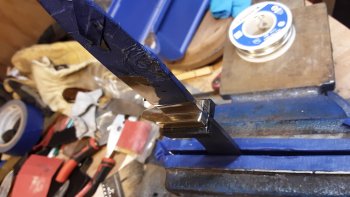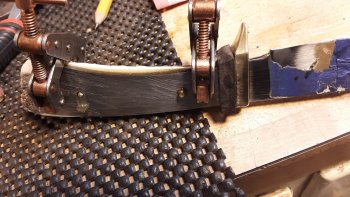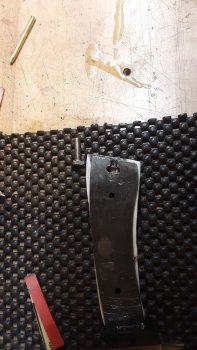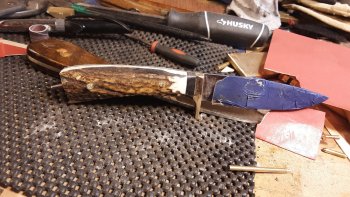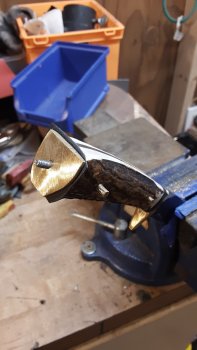DanF
Well-Known Member
Hammered the solder flat, it only takes a tiny bit. The flattened part would be enough for a dozen knives, or more.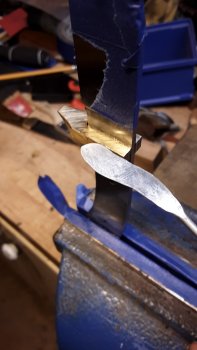
I use a plumber's solder rag to wipe excess solder while it is still flowing, keeps cleanup to a minimum. Graphite on the ricasso area just in front of the bolster makes any cleanup a bit easier in the end also. The small amount visible behind the bolster is of no consequence as long as the spacer fits snug against the bolster.
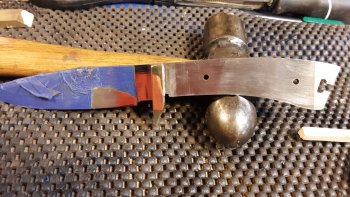
Waiting for epoxy to dry now.
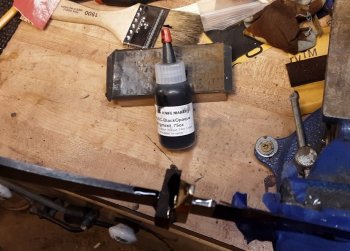
If you haven't tried USA Knifemakers epoxy color additives, you might want to. I used to used powdered dies from Stewart McDonald's, the USA stuff does a much better job giving deeper, richer, more opaque colors.

I use a plumber's solder rag to wipe excess solder while it is still flowing, keeps cleanup to a minimum. Graphite on the ricasso area just in front of the bolster makes any cleanup a bit easier in the end also. The small amount visible behind the bolster is of no consequence as long as the spacer fits snug against the bolster.

Waiting for epoxy to dry now.

If you haven't tried USA Knifemakers epoxy color additives, you might want to. I used to used powdered dies from Stewart McDonald's, the USA stuff does a much better job giving deeper, richer, more opaque colors.

